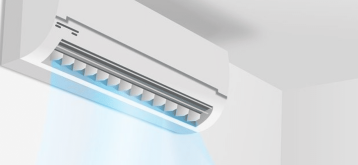What to do in Power Outages
Advice
What to do in Power Outages
Storm season is approaching, and with that comes the risk of power outages. Power outages can be inconvenient and unsettling, but knowing how to handle them can make a big difference. Whether it’s a short-term blackout or a more prolonged outage, here’s a step-by-step guide to help you navigate the situation safely and effectively.
1. Stay Calm and Assess the Situation
First and foremost, stay calm. Check if the power outage is limited to your home or if it’s affecting the entire neighborhood. If your neighbors have power, the issue might be isolated to your home. If it’s a widespread outage, contact your local utility company to report the problem and get updates.
2. Check Your Circuit Breaker
Sometimes, power outages are caused by tripped circuit breakers rather than an external issue. Locate your electrical panel and see if any breakers have flipped to the “off” position. If so, try resetting them by turning them off and then back on. If the breaker trips again, there may be a more serious issue that needs professional attention.
3. Use Flashlights and Avoid Candles
In the dark, it’s tempting to light candles, but they can pose a fire hazard. Instead, use flashlights or battery-operated lanterns. Keep extra batteries on hand and ensure your devices are in good working order.
4. Preserve Food and Avoid Opening the Fridge
Keep the refrigerator and freezer doors closed to maintain the cold temperature. Food can stay safe for up to 4 hours in a refrigerator and 48 hours in a freezer if unopened. If the power is out for an extended period, use a food thermometer to check the temperature of your perishables before consuming them.
5. Unplug Appliances and Electronics
Unplug sensitive electronics and appliances to protect them from potential power surges when the electricity is restored. Leave one light on so you’ll know when the power returns.
6. Stay Informed
Keep a battery-powered or hand-cranked radio to stay updated on the status of the outage. Many communities also have alert systems that provide information on power restoration and safety tips.
7. Check on Neighbors
If it’s safe to do so, check on neighbors, especially those who might need additional assistance, such as the elderly or disabled. This can help ensure everyone is safe and informed.
8. Prepare for Future Outages
Consider investing in a generator or backup power source if power outages are frequent in your area. Regularly check your emergency kit and include essentials such as water, non-perishable food, and a first aid kit.
9. Call a Professional if Needed
If the power outage is due to an electrical issue within your home, such as persistent breaker trips or flickering lights, contact a licensed electrician. Attempting to fix electrical problems yourself can be dangerous.
By staying prepared and following these steps, you can manage a power outage effectively and keep your household safe. For any electrical concerns or professional assistance, give Mercury a call today!
We’re here to help you stay safe and well-prepared!
Remember, don’t handle electrical projects without a Queensland license.
Contact us here if you need repairs.
Suggested Articles

Can Good Air Conditioning Help You…
Struggling to get a good night’s sleep? Your air conditioner might just be the secret weapon you…
Read More
How to Store Cords: Safe and…
Messy cords aren’t just frustrating — they can also be unsafe. Tangled extension leads, power cords and chargers…
Read More
The Benefits of LED Lighting: Why…
The Benefits of LED Lighting: Why You Should Make the Switch When it comes to lighting your home or business,…
Read More